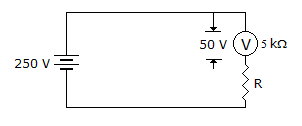Electronics and Communication Engineering - Electronic Devices and Circuits
Exercise : Electronic Devices and Circuits - Section 13
- Electronic Devices and Circuits - Section 14
- Electronic Devices and Circuits - Section 27
- Electronic Devices and Circuits - Section 26
- Electronic Devices and Circuits - Section 25
- Electronic Devices and Circuits - Section 24
- Electronic Devices and Circuits - Section 23
- Electronic Devices and Circuits - Section 22
- Electronic Devices and Circuits - Section 21
- Electronic Devices and Circuits - Section 20
- Electronic Devices and Circuits - Section 19
- Electronic Devices and Circuits - Section 18
- Electronic Devices and Circuits - Section 17
- Electronic Devices and Circuits - Section 16
- Electronic Devices and Circuits - Section 15
- Electronic Devices and Circuits - Section 1
- Electronic Devices and Circuits - Section 13
- Electronic Devices and Circuits - Section 12
- Electronic Devices and Circuits - Section 11
- Electronic Devices and Circuits - Section 10
- Electronic Devices and Circuits - Section 9
- Electronic Devices and Circuits - Section 8
- Electronic Devices and Circuits - Section 7
- Electronic Devices and Circuits - Section 6
- Electronic Devices and Circuits - Section 5
- Electronic Devices and Circuits - Section 4
- Electronic Devices and Circuits - Section 3
- Electronic Devices and Circuits - Section 2
41.
The frequency at which maximum voltage occurs across the inductance in R-L-C series circuit is
42.
A series circuit has R = 5 Ω and C = 10 μF. At t = 0 it is switched on to a 10 V dc battery. The maximum current in the circuit is
Answer: Option
Explanation:

43.
In figure, the value of R should be


Answer: Option
Explanation:

44.
A practical Parallel resonant circuit has a coil in Parallel with a 0.14 μf capacitor. The coil has an inductance of 1 mH and a resistance of 10 ohms. The Q of the circuit is
Answer: Option
Explanation:

 .
.
45.
An AC circuit has two branches in parallel. The current in one branch is 5 A. Then the current source
Answer: Option
Explanation:
5 A current may be (say) 3 + j 4A. The current in the other branch is x ± jy. The total current is (3 + x) + (4 ± y). This may be 5A or more or less.
Quick links
Quantitative Aptitude
Verbal (English)
Reasoning
Programming
Interview
Placement Papers



